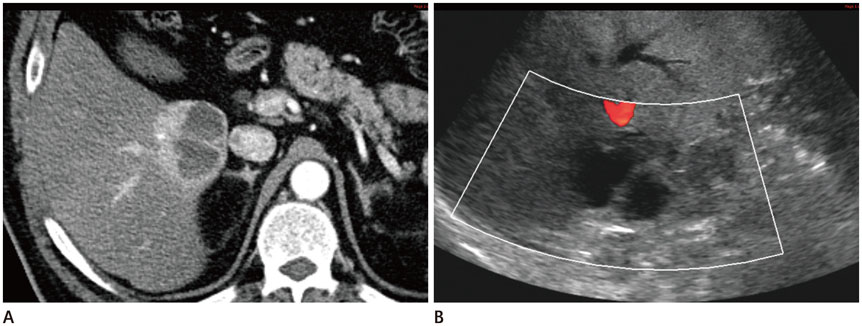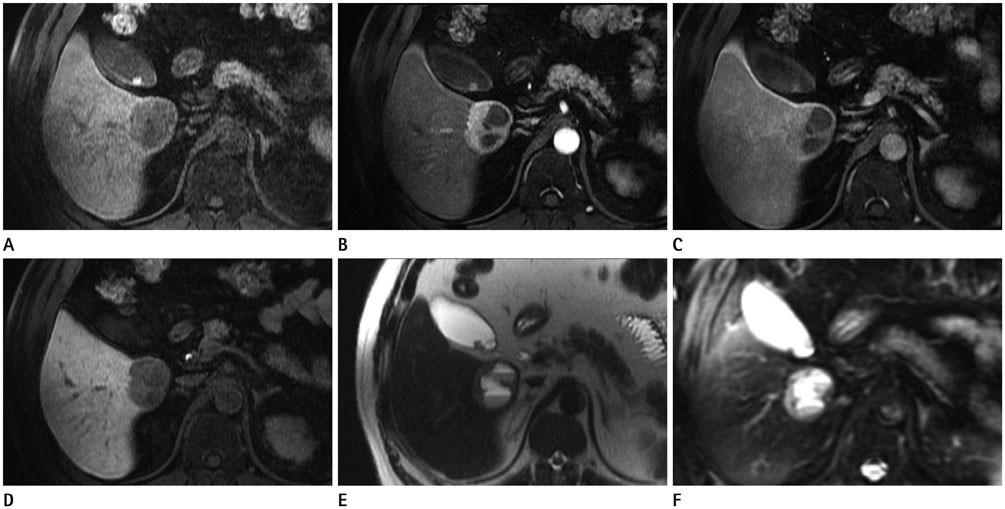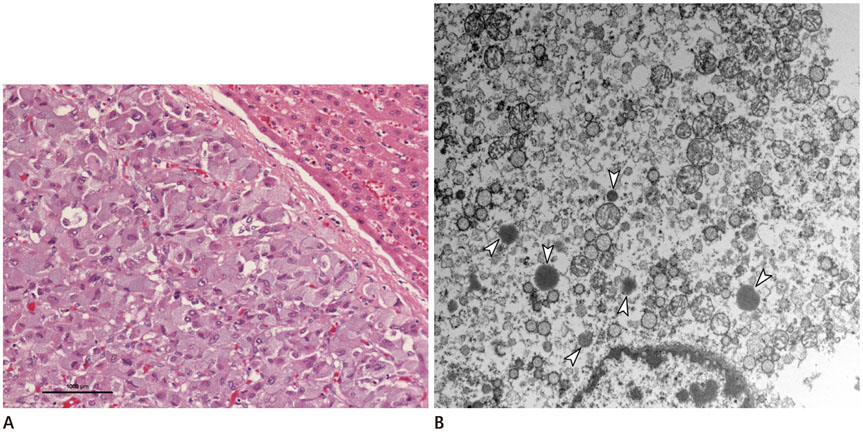J Korean Soc Radiol.
2016 Nov;75(5):389-393. 10.3348/jksr.2016.75.5.389.
Imaging Findings of a Primary Paraganglioma of the Liver: A Case Report
- Affiliations
-
- 1Department of Radiology, Daegu Catholic University Medical Center, Catholic University of Daegu College of Medicine, Daegu, Korea. urkang@cu.ac.kr
- 2Department of Pathology, Daegu Catholic University Medical Center, Catholic University of Daegu College of Medicine, Daegu, Korea.
- KMID: 2355993
- DOI: http://doi.org/10.3348/jksr.2016.75.5.389
Abstract
- Primary hepatic paraganglioma is an extremely rare type of tumor originating from extra-adrenal chromaffin cells. We report a case of primary intrahepatic paraganglioma in a 52-year-old man, with pathologic confirmation through right hepatectomy. An imaging study indicated a predominately hemorrhagic septated cystic mass and peripheral marked enhancement of the solid portions, which showed persistent enhancement.
MeSH Terms
Figure
Reference
-
1. Sahdev A, Sohaib A, Monson JP, Grossman AB, Chew SL, Reznek RH. CT and MR imaging of unusual locations of extra-adrenal paragangliomas (pheochromocytomas). Eur Radiol. 2005; 15:85–92.2. Yang DM, Yoon MH, Kim HS. Primary paraganglioma of the liver: a case report. J Korean Radiol Soc. 1997; 37:873–876.3. Rimmelin A, Hartheiser M, Gangi A, Welsch M, Jeung MY, Jaeck D, et al. Primary hepatic pheochromocytoma. Eur Radiol. 1996; 6:82–85.4. Khan MR, Raza R, Jabbar A, Ahmed A. Primary non-functioning paraganglioma of liver: a rare tumour at an unusual location. J Pak Med Assoc. 2011; 61:814–816.5. Jalil ND, Pattou FN, Combemale F, Chapuis Y, Henry JF, Peix JL, et al. French Association of Surgery (AFC), and The French Association of Endocrine Surgeons (AFCE). Effectiveness and limits of preoperative imaging studies for the localisation of pheochromocytomas and paragangliomas: a review of 282 cases. Eur J Surg. 1998; 164:23–28.6. Baez JC, Jagannathan JP, Krajewski K, O'Regan K, Zukotynski K, Kulke M, et al. Pheochromocytoma and paraganglioma: imaging characteristics. Cancer Imaging. 2012; 12:153–162.7. Reinig JW, Stutley JE, Leonhardt CM, Spicer KM, Margolis M, Caldwell CB. Differentiation of adrenal masses with MR imaging: comparison of techniques. Radiology. 1994; 192:41–46.8. Wang LX, Liu K, Lin GW, Jiang T. Primary hepatic neuroendocrine tumors: comparing CT and MRI features with pathology. Cancer Imaging. 2015; 15:13.9. You Z, Deng Y, Shrestha A, Li F, Cheng N. Primary malignant hepatic paraganglioma mimicking liver tumor: a case report. Oncol Lett. 2015; 10:1176–1178.
- Full Text Links
- Actions
-
Cited
- CITED
-
- Close
- Share
- Similar articles
-
- Primary Paraganglioma of the Liver: A case report
- Ultrasound, CT, and MR imaging Findings of Paraganglioma Originating at the Urinary Bladder: A Case Report
- Breast Metastasis from Malignant Paraganglioma: A Case Report
- Malignant Gastric Paraganglioma with Liver Metastasis: Imaging Findings and Literature Review
- A case report of malignant paraganglioma with hepatic metastases




